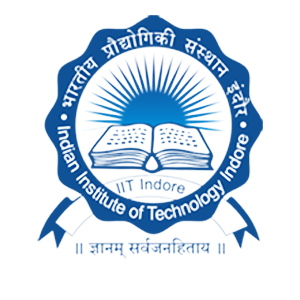
Nano & Energy Materials Lab
Research Group of Prof. Kushwaha

Properties of a material can be extensively tailored by designing various nanoscale materials and accordingly, the domain of application can be enlarged. The group is keen on the growth of various nanostructures of different (metal oxides, metals, chalcogenides) materials. Synthesis of graphene and graphene, like other 2-D materials using top-down as well as bottom-up approaches and their surface modification is one of our interests. At present, the group is working on the design, synthesis and characterization of various nanoscale structures of titanium oxide, zinc tin oxide, gallium oxide and nickel-cobalt alloy and MoS2. The physics of quantum confinement and surface properties are always at the center of interest. However, the role of defects on electronics & optoelectronics properties and control over these defects by surface modification are one of the major interests of the group.

Electrodeposition and Electrochemical 3D Printing: Electrodeposition is a versatile and cost-effective method enabling precise control over material composition, thickness, and morphology at the nanoscale. It involves the migration of ions from electrolyte solutions, followed by reduction and deposition as solid material, crucial for metallization, surface engineering, and functional material synthesis. Our research group employs electrodeposition to deposit metal alloys for electrode manufacturing. In electrochemical 3D printing complex metal patterns are created on conductive substrates, reducing costs and environmental impact. Electrodeposition and electrochemical 3D printing are transformative technologies which facilitate the production of microscale electronic circuits, sensors, connectors and vital for miniaturized devices.

High-quality thin films of semiconductors are the backbone of electronic devices. The physical vapor deposition techniques are the most accepted tools to develop various semiconducting films for electronic applications. However, an alternative approach with economical processing is always in demand. Considering this, our group is working toward the development of various protocols to deposit high-quality thin films of Ga2O3 using wet-chemical techniques. We are also interested on GaN and SiC thin films. The development of heterostructures, doping and defect engineering are ongoing efforts. We adopt chemical vapor deposition, electrodeposition, chemical bath deposition and hydrothermal, etc. The improvement in the quality of the thin film and their properties are the major targets to make these thin films useful in several electronic applications such as Memristors, Photodetectors and Power Electronic Devices etc.

Green Hydrogen: Materials & Technologies
In green hydrogen, a paramount focus lies on electrode development research. Electrodes are the heart of electrolyzers, pivotal for efficient water splitting in both photoelectrochemical (PEC) and electrochemical processes. Advancements in electrode materials and designs are essential to enhance efficiency, durability, and cost-effectiveness. Research endeavors concentrate on exploring novel catalysts, nanostructured materials, and innovative electrode architectures to optimize performance. By addressing electrode-related challenges such as catalytic activity, stability, and mass transport limitations, breakthroughs can be achieved in electrolyzer technologies. This targeted research direction not only accelerates the commercial viability of green hydrogen production but also underpins the pivotal role of electrodes in realizing a sustainable energy future. Which has a major role in advancing the green hydrogen economy.
• Solar Driven Hydrogen Production OR Photoelectrochemical (PEC) water splitting: Here electrodes function as photocatalysts, essential for driving the crucial water electrolysis process. We have endeavored to develop various materials such as ZnO, TiO2, Zn2SnO4, and CZTS specifically for PEC water splitting. Research endeavors predominantly aim to advance electrode materials, seeking to optimize efficiency, stability, and scalability. This involves exploration of novel catalysts, surface modifications, and innovative electrode designs to enhance charge transfer kinetics and minimize energy losses. By delving into fundamental electrochemical mechanisms and harnessing cutting-edge materials science, researchers aspire to overcome challenges like electrode degradation and sluggish reaction kinetics, ultimately unlocking the full potential of PEC water splitting and advancing solar-driven energy conversion.
.jpg)
• Electrocatalytic Hydrogen Production: Electrocatalytic hydrogen production through electrolysis offers a promising path for sustainable energy generation. This process involves splitting water into hydrogen and oxygen using an electric current, typically facilitated by an electrolyzer. However, recent advancements have also shown the potential for producing hydrogen from glucose electrolysis, offering a renewable and carbon-neutral alternative. Our research group is particularly focused on enhancing the efficiency and performance of electrolyzers by utilizing various alloy catalysts. We are exploring the utilization of alloys such as Ni-Co, Ni-Co-Fe, and Ni-Fe, which are coated onto substrates, to serve as efficient electrocatalysts for hydrogen production. These alloy catalysts offer advantages such as high catalytic activity, durability, and resistance to corrosion, making them promising candidates for use in electrolyzers. we aim to optimize their performance and develop cost-effective electrolysis systems for large-scale hydrogen production. Through our research efforts, we endeavor to contribute to the development of cost-effective and sustainable electrocatalytic systems for clean energy production.

• Alkaline Water Electrolyzer: Our research focuses on developing Alkaline electrolyzers for green hydrogen production. We aim to optimize the electrolyzer design and test its efficiency in terms of hydrogen evolution rate and other key properties. Through prototyping and rigorous testing, we endeavor to contribute to the advancement of sustainable hydrogen production technologies, crucial for transitioning towards a greener energy future.
.jpg)
Hydrogen Storage, Hydrogen Fuel Cells, and Metal-air Batteries
Our research also focuses on Materials-based Hydrogen Storage, Hydrogen Fuel Cells, and Metal-air Batteries. We aim to explore innovative materials and technologies to enhance hydrogen storage capacity, efficiency, and stability in fuel cells. Additionally, we investigate metal-air battery systems for their potential as high-energy-density storage solutions. By advancing these areas, we aim to contribute to the development of cleaner and more sustainable energy storage and conversion technologies.